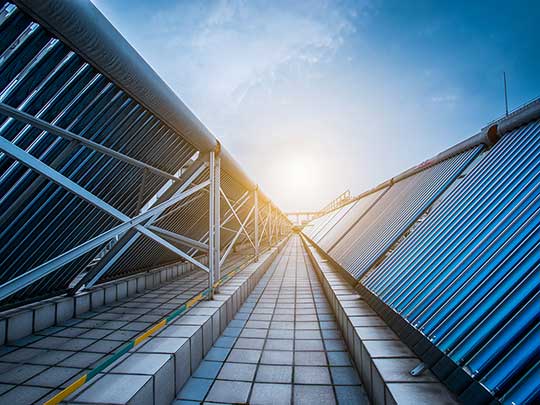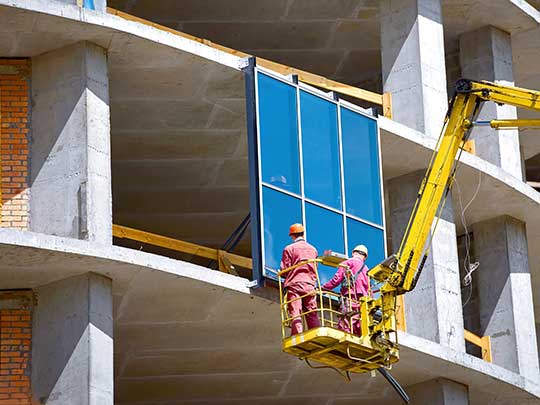How the construction indutry is working towards net zero carbon economy
With the latest National Construction Code (NCC) 2022 coming into effect in May 2023, and with the Australian government aiming for the ambitious goal of a net zero carbon economy by 2050, architects, designers and construction practitioners are under more pressure than ever before to implement energy-efficient solutions wherever possible.
Adding to this is the ever-rising cost of energy, with countries around the globe plunging into what many are calling an energy crisis on the back of rising fuel prices caused by a confluence of factors ranging from the pandemic causing power plant maintenance backlogs, the Russia/Ukraine conflict causing shortages in key energy-related commodities, prepandemic disinvestment in fossil fuel energy solutions in favour of renewables, and a simultaneous shortage in critical metals needed for renewables to succeed, besides other factors.
With energy scarcity and climate change being top of mind, it makes economic sense to seek out energy-efficient construction and fit-out solutions, as well as to support the use of recycled materials wherever possible.
In light of all of this, what are some of the potential solutions and factors that need to be considered by construction and fit-out companies?
Light And Heat
Controlling light and heat within buildings typically translates into one of the biggest ongoing energy expenses. According to MIT in the USA, about 40% of all energy consumed by buildings globally is directly attributed to heating and cooling processes alone. Add energy consumption from lighting to this and you are sitting at about 50% of all energy costs.
Therefore, finding ways to reduce heating and cooling energy consumption, along with lighting, can make a massive impact on not only global energy consumption and contribute to a significant reduction in emissions, but it can also have a positive impact on businesses’ bottom lines.
When it comes to energy-efficient construction and fit-outs, often lighting and heating work in tandem. Large glass windows that are positioned strategically to allow in as much sunlight as possible are extremely effective at not only providing free and ample lighting to indoor spaces but also allowing the sun to naturally heat the interior more effectively. The introduction of retractable shading options such as awnings or roller blinds can be effectively used to produce cooling should the sun be too warm.
Admittedly, such natural heating and cooling solutions are not always as effective as needed, so HVAC systems are still usually required. However, the installation of heat exchangers rather than air conditioners can make a significant difference in the energy consumption of a building.
Likewise, electrical lighting cannot be entirely avoided. However, installing energy-efficient LED lighting solutions is far more environmentally friendly than alternatives such as halogen or fluorescent lighting. LED lighting produces brighter light for longer, without producing as much heat or requiring as much energy, cutting your lighting energy costs considerably.


When it comes to water heating, solar water heaters are highly effective at reducing the energy cost of a building. These are particularly effective in hot and sunny countries such as Australia.
Recycled Materials
Recycled materials are great options for fit-outs. Not only are such materials low cost but they have a positive environmental impact by reducing unnecessary waste that would otherwise end up in landfills. By using recycled materials, you are contributing to the circular economy and helping to create and sustain jobs that benefit the planet.
Particularly, bamboo or reclaimed timber can be used for a range of office joinery, shelving, furniture and cladding. Composite decking boards are also a great option as they are cheap, look great and are extremely durable. It looks just like timber but is made from a variety of recycled materials, such as plastics and other waste products. It can also be used to manufacture furniture, table tops and more.
Renewable Resources
The installation of solar panels on the roof of a building can contribute significantly to its energy efficiency by supplementing or even wholly supporting the energy needs of the building through a renewable source of electricity.
In addition, the installation of water catchment troughs, tanks and gutters to funnel rainwater appropriately can further contribute to the reduction of waste. Water purification carried out by water utilities costs a lot of money and energy, not to mention the chemicals for treatment and the cost of pumps, pipe maintenance and more.
By catching and storing rainwater ‒ particularly for greywater uses such as flushing toilets ‒ a building can significantly reduce its waste and operating costs while also contributing to reducing overall and indirect energy consumption.
Commercial Construction Management
For a Melbourne commercial construction manager who can ensure that your construction and fit-out project is energy efficient and uses sustainable resources as much as possible, contact us at Fox Management Group today.

0 Comments